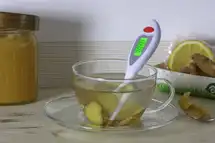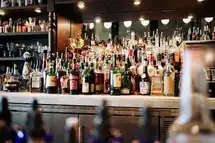What are food safety solutions?
There is no one-size-fits-all answer to this question, as the best food safety solutions will vary, depending on the specific needs of your food business. However, some common food safety solutions include implementing food safety management systems, conducting regular food safety audits, and providing employee training on food safety.
5 Food Safety Solutions Every Foodservice Business Should Use
What is Food Safety?
When preparing food for human consumption, food safety is absolutely essential. It is the practice of ensuring that food is prepared in clean, safe, and hygienic conditions. Food can become contaminated at any point during the supply chain, storage, or preparation stages, right from the farm to the table. And it is important to take precautions at each step of the process to ensure that food prepared for public consumption does not become contaminated. There are four main factors that contribute to food safety- food handling, food processing, food storage and transportation.
Maintaining food safety is vital because it helps to prevent foodborne illness and even death. There are various ways to ensure food safety, such as cooking food thoroughly, storing it in clean containers, and keeping hands and surfaces clean when handling food.
Why is Food Safety Important?
According to the Centers for Disease Control and Prevention (CDC), about 48 million people in the United States suffer from foodborne illnesses annually. Around 128,000 need hospitalization, while nearly 3,000 die. Foodborne illnesses are a major public health concern and take a massive toll on the country's economy.
Most people don't think about food safety until they or someone they know fall ill from consuming contaminated or unsafe food. Outbreaks of illnesses caused by bacteria, viruses, toxins, and parasites in food are increasing at a rapid rate, with many countries struggling to control the problem.
Food safety is thus incredibly important for public health. Its practices help ensure that food consumed is free from harmful contaminants that can lead to illnesses. By keeping kitchen and food production processes safe, we can help protect ourselves and our families from falling ill.
What follows is a roundup of five foolproof food safety solutions.
Food safety concerns can result in food-borne illnesses.
To ensure food safety, businesses should follow essential practices.
No. 1 - Understand Government Guidelines
Food safety is a complex issue that involves many different players, such as farmers, food processors, distributors, and sellers. The government makes sure all the stakeholders maintain food safety standards and follow the laws laid out to make Food Safe for human consumption.
As a cog in the foodservice wheel, the first thing you can do to maintain food safety at your establishment is to update yourself on the latest government guidelines that apply to your business. There are a number of federal agencies that have a role in regulating the foods we eat, including the U.S. Food and Drug Administration (FDA) and the U.S. Department of Agriculture (USDA). Each of these agencies has its own set of regulations and resources you need to familiarize yourself with.
Even the state and local law enforcement authorities may have their own set of regulations you need to follow. In some cases, these regulations may be more stringent than the federal ones. It is important to check with your local health department about the rules that apply to your particular business. By understanding the government regulations surrounding food safety, you can create a strong foundation of food safety solutions that will help your business stay out of trouble and keep your customers safe.
No. 2 - Make Sure Employees Wash Their Hands
Thanks to the Covid-19 pandemic, the practice of washing hands and sanitizing them frequently to eliminate germs, bacteria, and other pathogens has been drilled into our collective consciousness. While it's important for customers to wash their hands before partaking in a meal, this practice is even more critical for those who handle and prepare food and drinks for consumption. Their sanitation and food safety practices affect not just their own health, but the health of consumers who visit the restaurant too.
All foodservice employees should wash their hands thoroughly with soap and water for at least 20 seconds before starting work, after using the restroom, and after handling raw food. Employees should also wash their hands after taking out the trash, coughing or sneezing, and eating or drinking. It is also good practice to frequently wash one's hands during the workday to reduce chances of contamination. In addition to washing their hands frequently, employees should also avoid touching their face while working. If they do touch their face, they should wash their hands immediately afterwards. And as a business owner, try to enforce this practice as a mandatory rule in order to avoid food safety concerns.
No. 3 - Separate Cooked and Raw Food

For food safety reasons, it is important to keep cooked and raw food separate. This means keeping them apart while shopping at the grocery store, in the supply chain, when you are storing them in your inventory or refrigerator, as well as during the cutting and preparation stages. Raw meat, poultry, fish and shellfish may contain harmful bacteria that can contaminate other foods. If these foods touch other foods or surfaces in your kitchen, they can cross-contaminate them. To help prevent this from happening, make sure to wash your hands thoroughly after handling raw meat, poultry, or fish. Also, clean any surfaces that come in contact with raw foods, such as cutting boards and knives, before using them for anything else. Ideally, cutting boards and other surfaces should be completely separated for raw and cooked food items.
The potential for customers to get sick from food-borne illnesses is high.
It's therefore important to take the right precautions to keep food safe.
No. 4 - Follow the 2-Hour Rule
Cooked food items that are left out at room temperature are prone to spoil or get contaminated very quickly. This is because the temperature range between 40-140 F presents the ideal conditions for harmful bacteria to thrive. Thus, while non-perishable food items can be left out in the open for any length of time, perishable items such as milk or cooked food cannot withstand room temperature conditions for more than two hours. It is recommended that after cooking, hot foods should ideally be consumed immediately or stored in the refrigerator after cooling down. If it must be left out, make sure it's no longer than two hours, after which it will become unsafe for consumption. This is one of the primary food safety measures all food handlers have to abide by.
No. 5 - Train Your Employees on Food Safety
In order to keep your customers safe, you need to make sure that your restaurant's employees are properly trained in food safety. They ought to know how to correctly handle and prepare food, as well as how to clean and sanitize all the equipment and surfaces in your kitchen. Ideally, all or at least one of your staff members should possess an accredited food handler certificate, rendering them fit to handle and monitor food safety procedures.
You can provide training for your employees by holding regular meetings or workshops on food safety. You can also curate an online course or video series they can watch, to learn about different food safety solutions and practices. Make sure to test their knowledge periodically with quizzes or exams to ensure that they retain the information and apply it in their work.
Top 3 Food Safety Software Solutions for Restaurants
Zip HACCP
Zip HACCP by Hubworks is an easy-to-use Hazard Analysis Critical Control Point (HACCP) management system that helps restaurants stay compliant with food safety regulations. HACCP is a food safety management system devised by the FDA. It enables businesses to analyze and monitor the various processes of food production.
Zip HACCP is a software solution that takes care of each of the seven HACCP principles, which are hazard analysis, identifying Critical Control Points (CCP), monitoring critical limits monitoring procedures, taking corrective actions, record-keeping and documentation. Zip HACCP works in real-time to monitor the entire food safety system of a restaurant, giving accurate and real-time updates in case of deviations or violations. With Zip HACCP, you can create safety audit checklists, monitor food temperature using Bluetooth thermometers, and log all real-time data for later action. Zip also offers reports and insights into your business's food safety compliance, violations, and further monitoring procedures.
FoodLogicQ
The FoodLogicQ software offers food safety management and monitoring tools with visual dashboards. These dashboards can be used to track food safety measures undertaken by your own business, as well as those undertaken by your suppliers, and ensures that all norms are followed well. Businesses can conduct safety checks, do real-time tracking, investigate violations, and act on the data gathered. The food safety solution offered by FoodLogicQ also manages record-keeping and documentation for a business.
Safefood360
Safefood 360 is a complete food safety management system that takes care of quality maintenance, as well as compliance. The software adapts to amendments and updates in local and federal food safety compliance laws. Features offered by Safefood 360 include HACCP plans, monitoring, food safety auditing and review, easy access to reports, and real-time alerts in case of errors and accidents.
You're keen to invest in good food safety software, but you don't know which to go with.
This article lists the top 3 food safety software solutions for restaurants, to help you out.














































































































